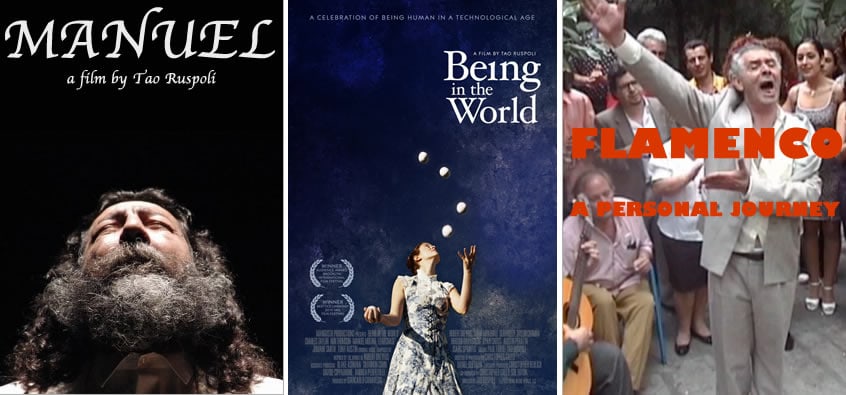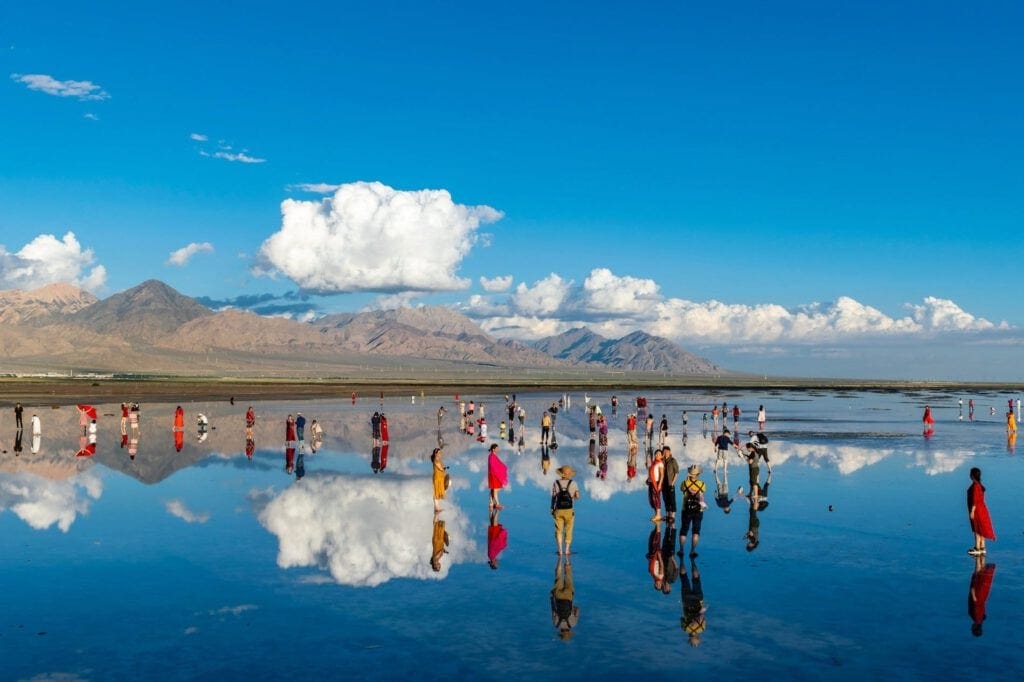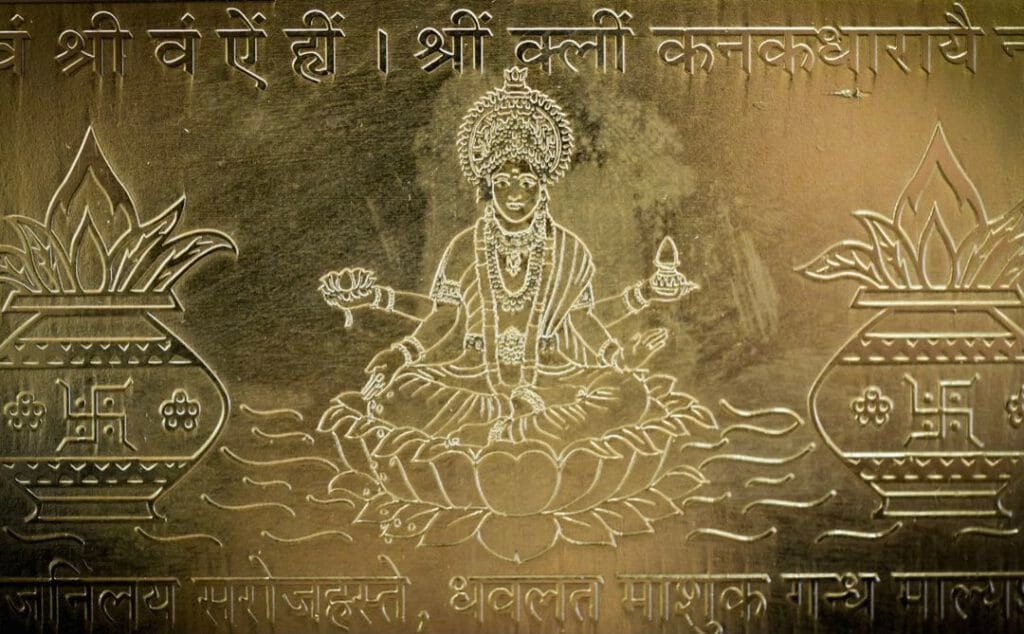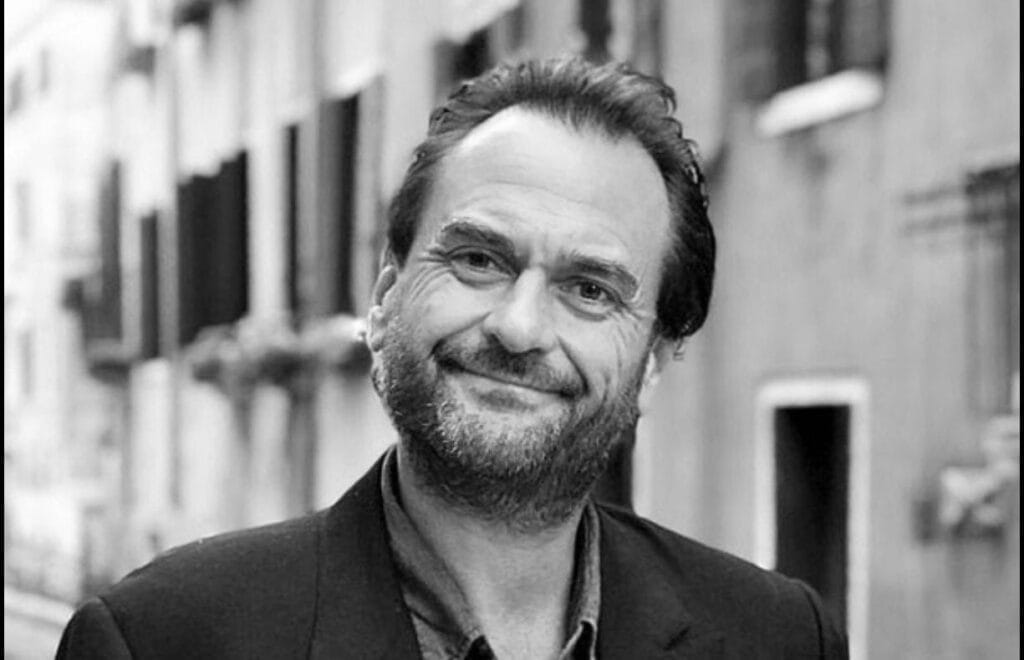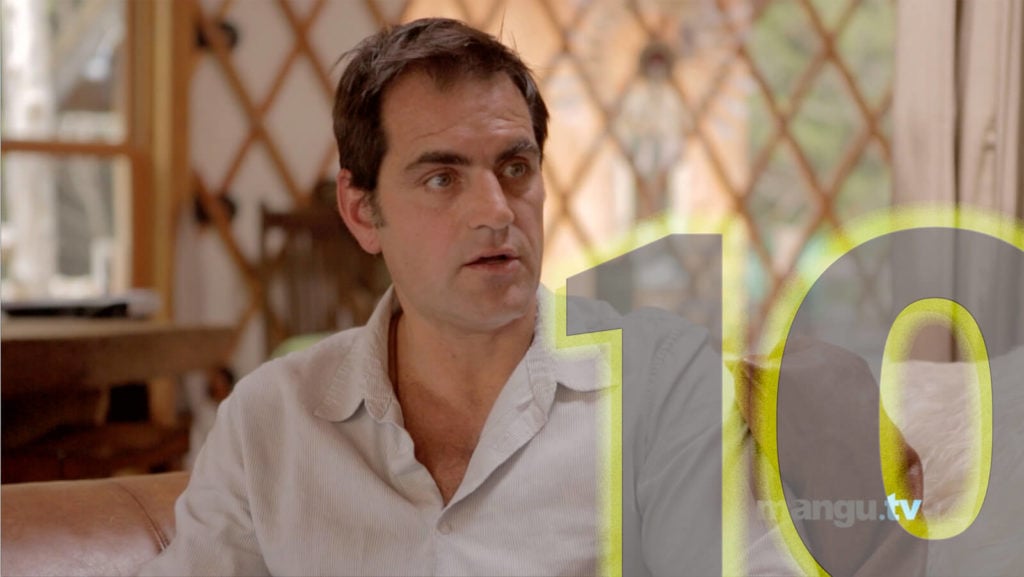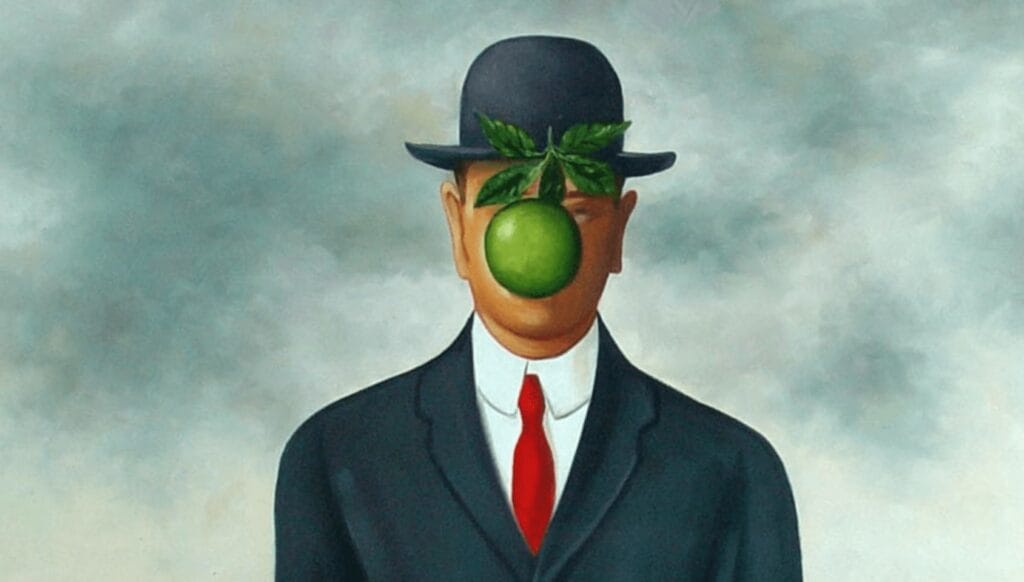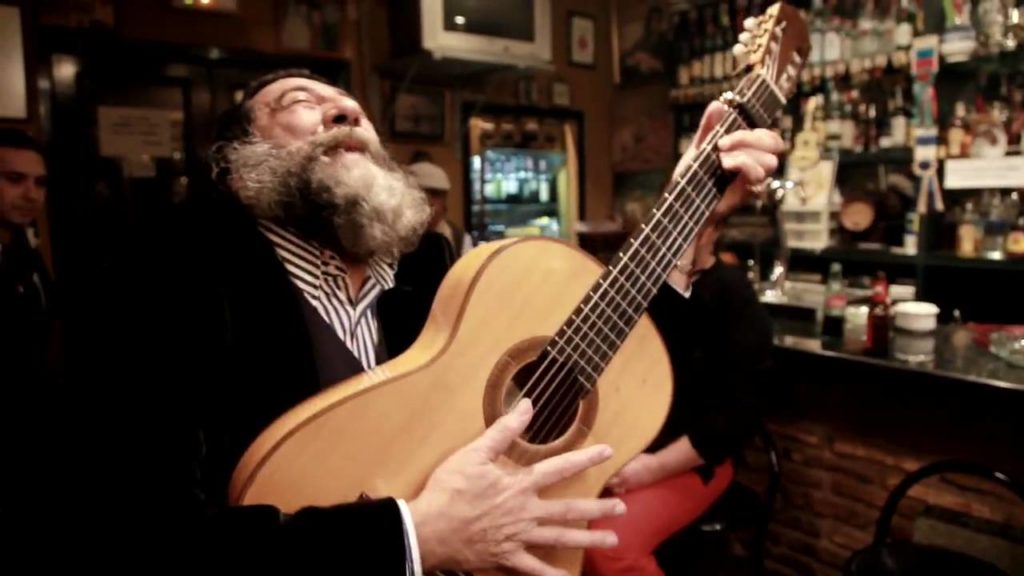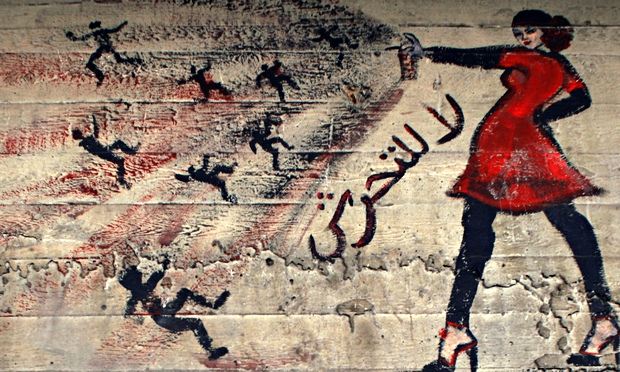It’s 2am, and although I’m alone and exhausted. I decide to take a walk over to La Carboneria, a bar I used to hang out in 10 years earlier, when I first came to Andalucia to study the flamenco guitar. Standing outside, with a huge joint in his hand (one of those fat, filtered mixtures of tobacco and hashish you only find in Europe,) is an old bearded man. He smiles warmly, with a mischievous glint in his bloodshot eyes, takes a big puff, and says
“Hola.”
It’s 2007 I am in Seville and I’m “casting” for my documentary, Being in the World. Of course there’s a deep irony in the fact that I’m here inspired by my mentor, a Jewish professor named Hubert Dreyfus, who (along with other great leftwing philosophers, from Foucault to Derrida) had taken up the philosophy of Martin Heidegger and separated it from his disturbing ties to the Nazi party; and I’m here looking for a Gitano (who along with a Creole chef in New Orleans, a Japanese carpenter and several others) will exemplify a certain type of skillful mastery which, according to Dreyfus’s interpretation of Heidegger, allows for the richest, most meaningful existence possible—one shaped by a sense of community, and by a sensitivity and responsiveness to subtle distinctions that others without these skills can’t appreciate, all situated within a unique historical time and place with its own style and practices.
So I smile back politely and walk into the bar, before doing a double-take and thinking, “Oh my fucking God: That was Manuel Molina.” Manuel Molina—one of flamenco’s greatest stars, who along with his then-wife, the gorgeous and equally talented Lole Montoya, calling themselves Lole y Manuel, had sold millions of records in the 1970s and filled arenas with their concerts (one of their songs even features prominently in Quentin Tarantino’s Kill Bill: Volume 2 soundtrack.)
Manuel had gone from being one of the originators and icons of that thing I so detest—flamenco “pop” and “fusion” in the 1970s—to becoming, in his older years, a bastion of what I love most: raw, authentic, bohemian flamenco that only manifests late at night, off the stage, within the smoky realms of whiskey-soaked nights in that little triangle between Sevilla, Jerez and Cadiz, where true flamenco was born and still struggles to exist.
Later in the bar, I see Manuel chatting with some friends and I approach nervously. I tell him why I’m there and wonder if he would even consider talking to me about my little film. He looks me up and down, gives a little nod of approval, hands me his phone number, and says to call him tomorrow. I can’t believe my luck. The next day, chatting with Luis Peña, a young flamenco friend, I tell him about my encounter with Manuel and ask his advice about next steps.
“Forget it, Tao.” he says, “Manuel’s going to ask for too much money. There’s no way he will agree to be filmed for less than 10,000 Euro, at least!” Luis explains that Manuel is just too big; too important; too famous. We need to find someone who better fits into my modest means and aims. “Can’t I at least call and ask him?” “Sure, but don’t get your hopes up; and whatever you do, don’t talk about this stuff on the phone. This type of issue is delicate and can only be discussed in person.”
A few hours later, we find ourselves under the arms of a giant statue of Jesus Christ on a hillside outside Seville; Manuel explained that if we walked up to the statue, we would see Christ’s left hand pointing directly to his house. It works: we find the house and after an hour of drinking tea from Manuel’s beautiful hand crafted porcelain cups, and after explaining the ideas behind Being in the World, I finally must ask what Manuel would want in return for letting us film him.
“I don’t want to talk about it!” he exclaims. Then, more gently, “I want you to come back, and we will make your film, and most importantly, and the only thing I ask of you, is that we make it well, with patience and care. Then, when we are done, take whatever you had in your budget for me, and give it to my wife. I don’t ever want to know how much it was. It’s not important, and I don’t want to ever talk about money with you again. We have more important things to think about.” Deeply moved, we say our goodbyes and, my heart racing a bit, I start planning our next visit to Seville.
Several months later, I come back with Christopher Gallo, cinematographer, and Alan Kozlowski, founder of the giant hollywood post production house POP, sound expert, and fellow flamenco guitar player. Alan has humbly agreed to be our sound man: The opportunity to hang for a week with Manuel is too much for any true aficionado to pass up. What followed was a week I will never forget, and which I will not try to sum up, as I cannot do better in words than Manuel does himself, both in Being in The World and the short film that followed it, MANUEL, which focused exclusively on his songs, his poems, his profound philosophical insights, his charm, his showmanship, his recognition of the fragility of his way of life, and his paradoxical ability (which all masters seem to have) to be both completely unique and at the same time totally faithful to his tradition (think Lightnin’ Hopkins in the world of the blues).
To my utter surprise, Hubert Dreyfus didn’t like Manuel in the film. “I can’t stand him! He’s too proud; too self absorbed; too exhibitionistic. I much prefer the humility of your Japanese carpenter.”
“But doesn’t the fact that Manuel’s style doesn’t resonate with you prove exactly what we want to say in the film—that each world (as in the “world of Japanese carpentry” or the “world of flamenco”) has its own set of standards for what is good, for what works, for what counts as mastery, all things that in this case you will never appreciate without the skills for listening to flamenco and the experience of living in that particular world? It makes sense that pride and exhibitionism are positive traits in flamenco (or, for a more obvious example, you wouldn’t want to see a humble bullfighter, would you?)”
Dreyfus once explained to me that the ancient Greek world had heroes and slaves, while the Christian world was divided into saints and sinners. A saint in Greek times made no sense, and there weren’t any heroes lurking in medieval churches. (And if there were they wouldn’t have been recognized as such by anyone around them. In fact, a Greek hero might be seen by the medieval, if he had to be forced into his framework, as overly proud, wouldn’t he?) Isn’t this exactly the error Heidegger made, much more egregiously and unacceptably, in not understanding that cultivating a unique German identity didn’t have to lead to intolerance to anything different? At bottom, I found myself wondering, is there a fundamental contradiction involved in using a Gypsy as the most perfect illustration of the philosophy of a German nationalist who supported a regime that systematically killed the Roma people?
These are uncomfortable questions, so complex that I dared not confront them in the film, but they are what I’m thinking about now that Manuel has died, and a significant piece of his world goes with him. We’re in a space where the far right and the far left meet in an uncomfortable but fascinating space: The question is, can we affirm a unique cultural identity, celebrate “mastery” in particular domains (and embrace other hierarchies that skillfulness necessitates,) fighting against the forces of technology and globalization, all of which, according to Heidegger, level meaningful differences between people, places and things; can we do this without resorting to reactionary or backward-looking ideologies? I hope so…
Manuel Molina died May 19th, 2015.
